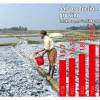Strict oversight is vital to end the tree-cutting bonanza

The High Court's nod on reining in tree-cutting practices by forming supervisory committees at the district and upazila levels could not have come at a more appropriate time. Despite the recent heatwave that turned out to be the longest in 76 years, tree felling by both public and private entities continues unabated, setting the stage for an even warmer future. You hear news of Bashundhara mowing down trees along the main road of its residential area. You hear of the forest department moving to cut down 2,044 trees on four roads in Jashore, similar to previous attempts targeting century-old trees on the Jashore-Benapole highway. You hear of the LGED felling trees in Patuakhali in the name of canal restoration.
These developments represent a dangerous disregard for trees and forests that keep temperatures down, among other things. One particularly disturbing development of late, as reported by this daily on Wednesday, saw over 1,000 trees felled at the Altadighi Lake in Naogaon as part of a government project. The multi-crore undertaking—initiated by the forest department three years go—aims to restore and conserve biodiversity at the historic lake and surrounding areas that now form part of the Altadighi National Park. Part of the plan is draining and re-excavating the lake, which is almost done. The forest department says the trees were removed to facilitate excavation, adding that those were invasive species harmful to the environment.
That may be the case, but why was it done without any prior environmental assessment? And why were those trees planted in the first place? Locals say the forest surrounding the Altadighi lake once boasted diverse wildlife. Subsequently, however, native trees were replaced by invasive or exotic varieties while the pond itself became shallower, causing the disappearance of many native species and even migratory birds.
The whole episode once again highlights how harmful policies and practices, often by government agencies, have contributed to the growing devastation of wildlife, biodiversity and ecosystems in the country. The time has come to put an end to this. While the High Court's assessment is rooted in the principle of engaging local experts in decisions to fell trees, if necessary, we feel it will require strict central supervision to limit harmful tree-cutting practices. For that, the relevant authorities must first be made accountable for their activities.


 For all latest news, follow The Daily Star's Google News channel.
For all latest news, follow The Daily Star's Google News channel. 










Comments